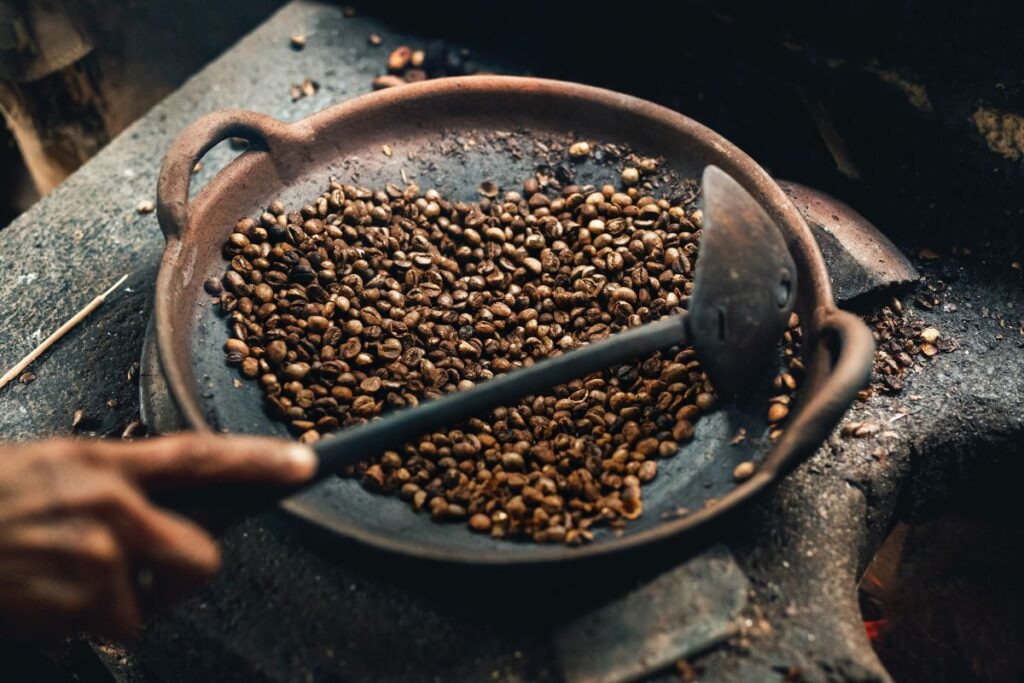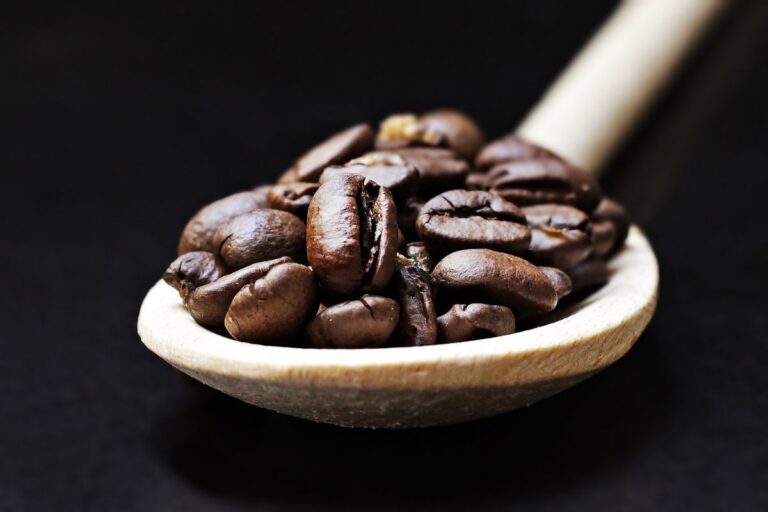Do you know multiple things affect the quality of your morning coffee? You wouldn’t know this if you didn’t know how to check the quality of coffee beans.
For nearly a decade now, my morning coffee has been like clockwork! But getting the best coffee to start my days in high spirits took some time.
By Lucy.
Affiliate disclosure
This page may contain affiliate links – we may earn a small commission when you make a purchase through these links. This is at no extra cost to you.
It has been an exciting journey of discovery as I searched for the best quality coffee. I had to kiss some frogs before finding “the one!”
In the process, I asked questions such as what makes my coffee taste so good?
How would you really know good coffee bean quality?
If you are curious like me, you are in the right place. Keep reading to discover how to examine the quality of coffee beans.
How To Check The Quality Of Green Coffee Beans – What Should You Look For?
Coffee has a grading system that does not look at only the resulting cup.
The Specialty Coffee Association (SCA) uses a standard process to determine the grade of green coffee beans.
Here is the grading process:
Screening
The beans are first screened to check their general uniformity of size.
You use a coffee bean screen with the same size holes ranging from 10/64 to 22/64 of an inch.
Sift the beans through the screen to find the general average size.
Specialty coffee’s size variance should not be more than 5% in your sample size.
Primary Defects
After the screening, the coffee beans are laid out flat so you can see each bean. Ensure the grading surface is sleek for ease of movement.
Moreover, it should be black and at least 2 x 2 feet.
You need at least 4000 Kelvin (K) lighting or higher to scrutinize the beans. During the examination, beans that look abnormal are separated for further examination.
If the beans have certain primary defects, they cannot be considered a specialty coffee.
As specified by the SCAA Defect Handbook, primary defects include:
- Full sour (1)
- Full black (1)
- Fungus damage (1)
- Dried cherry/pod (1)
- Foreign matter (1)
- Severe insect dents (1)
The coffee beans are automatically ineligible for specialty coffee consideration if any of these blemishes are discovered.
Secondary Defects
After removing coffee beans with primary defects, the remaining beans undergo a more thorough examination.
Checking for secondary defects requires more attention because secondary defects do not stand out like primary defects.
Separate small groups of beans from the rest and check them closely.
For the beans to qualify as specialty coffee, a 12.35-ounce batch of green coffee beans should not have more than five secondary defects.
The SCCA outlines the following as secondary defects:
- Floater (5)
- Shell (5)
- Withered (5)
- Hull/husk (5)
- Partial sour (5)
- Partial black (5)
- Immature/unripe (5)
- Parchment (5)
- Brocken/chipped/cut (5)
- Slight insect damage (10)
NB: The numbers in the parentheses represent the number of beans or occurrences of the defect that would make up one (1) secondary defect.
Cupping
After roasting, the coffee is usually tested for a particular flavor profile based on the farmer’s or roaster’s goal.
It will be graded based on how well it meets the intentional flavor.
Coffee Bean Quality Scale – How Can You Tell The Quality Of A Coffee Bean?
There is no universal coffee-grading system.
But the SCA Coffee Beans Classification is a standardized method used globally to compare coffee beans.
The method evaluates the association between the number of deficient coffee beans and the general cup quality. Different criteria are used to appraise coffee beans, including:
- The region where the coffee is grown;
- Manner of preparation;
- The altitude of the growing region;
- Bean shapes and colors.
Using the SCA Coffee Beans Classification approach, there are five coffee bean grades.
Each rank indicates several levels of imperfections.
You can find three main types of defects in coffee beans: unripe beans, large stones, and shells.
Coffee Bean Grades – What is the highest quality coffee bean?
Different regions use different coffee bean grading systems. However, all have similar underlying principles.
After looking at different grading systems, here are the universally accepted coffee grades:
What are Grade 1 Coffee Beans?
These are the highest quality coffee beans, also known as Specialty Coffee Beans. This grade is given to specialty coffee beans that don’t have natural defects.
For example, the chances of insect damage in Grade 1 coffee beans are nearly zero. However, if there are a few in the batch, they shouldn’t be more than three defective qualities.
When cupping Grade 1 Beans, they should have a distinctive attribute in acidity, taste, aroma, or body. Furthermore, it should be free of cup taints and faults.
To be graded as specialty beans, Zac Cadwalader states that the coffee beans should have no Quakers (unripe or poorly roasted beans) and be appropriately dried and sized.

What Coffee Beans Qualify as Grade 2?
Grade 2 refers to Premium Coffee Beans, which share many similarities with Grade 1 beans.
These coffee beans are prevalent in coffee shops worldwide.
Premium coffee beans differ from specialty coffee beans because they can have up to six defective qualities.
What are Grade 3 Coffee Beans?
These coffee beans are also known as Exchange Coffee Beans.
Ayush B of thirdwavecoffeeroasters.com claims that for coffee beans to be graded as Grade 3 or exchange grade, they should be 50% above the screening level. Moreover, they should have at most five Quakers.
Most supermarket brands use exchange coffee beans.
These coffee beans can have between 9 and 23 full defects.
Which Coffee Beans Qualify as Grade 4 Coffee Beans?
These are popularly referred to as Standard Coffee Beans. They have between 24 and 86 full defects in a 10.58-ounce batch.
Therefore, they are not the best choice for people looking for top quality and refined taste.
Grade 5 Coffee Beans – Are They That Bad?
Grade 5 coffee beans are called Off Grade Coffee Beans.
According to Coffeerella, these beans have over 86 full defects per batch. It is the worst of the batch, and you may want to avoid them.
However, if you don’t mind the bitter and sour taste you could still enjoy Grade 5 coffee!
Coffee Bean Quality Standards – What Is A Coffee Standard?
Coffee standards are an excellent tool used as reliable reference instruments established by experts. An SCA standard is a top-quality recommendation from the Standards Committee.
The standard is a quantifiable and qualifiable measure based on scientific testing that sets ranges of values for coffee.
Currently, the SCA has standards for cupping coffee, green coffee, and water.
What Makes A Good Coffee?
You have probably heard someone say, “You should try good-quality coffee!”
The first time I heard this popular statement, I was like, what does it even mean?
I understood what the statement means through years of experience and interacting with other coffee enthusiasts. Here is what I discovered:
How Is The Coffee Packaged?
Don’t concentrate much on the color and fonts used on the packaging.
Instead, look at the packaging type and how it functions.
Avoid fancy tins and standard cans because the packages are emptied of beans leaving more air inside. This causes the beans to become stale and unpalatable over time.
According to Sasha Manusama at 99designs.com, you should go for coffee packaged in airtight containers because the proper conditions in them keep the coffee fresh.
How Does The Coffee Smell?
Your coffee’s smell is also significant because it indicates how your coffee will taste.
For example, top-quality coffee does not have rancid or sour smells.
The rancid smell means the coffee has been sitting for too long, and the oils have started going off.
Does the coffee smell burned or overly bitter? Avoid it! This means it was roasted for too long, and its flavor is unpleasant. It is more like charcoal than smooth coffee!
On the flip side, if the beans smell almost raw, they were not roasted long enough.
This makes them challenging to grind, and the taste will be plant-like.
That said, it is best to go for coffee with a strong aroma.
What Are The Coffee Beans’ Visual Characteristics?
There are two main coffee bean types: Robusta and Arabica.
They share a few similarities but produce very different brews.
For instance, Robusta is mainly used for instant coffee, while Arabica produces the best coffee.
Where the beans are grown affects their appearance. However, the final appearance depends on the roasting method, time, and temperature.
Karmen Yoong of MTPAK provides a guide of spotting green coffee defects.
You can use these tips to select undamaged beans devoid of cracks or fractures.
Additionally, darker roasts are bitterer and a bit oily in appearance.
On the other hand, lighter roasts are relatively drier, but they should not be powdery.
How Does The Coffee Taste?
The best way to determine coffee’s quality is by tasting it.
The roast method and time will significantly influence the coffee’s taste profile.
Is it Flat and Weak?
Fresh coffee pops with flavor from the first sip.
A coffee selection guide by Five Senses advises that “fresh is the best!”
But stale coffee has a flat and weak flavor.
While everyone has their preferred roast, you can rate coffee based on its bitterness, sweetness, and additional tones.
Does it have any Flavors?
Also, a lot of top-quality coffee includes flavors.
Ensure you consider these additional flavors when grading your new coffee.
Poor quality flavored added to fine quality coffee messes up your Java!
For best results, I always taste my coffee black to get an accurate impression of its quality and flavor.
You should do the same, then add your usual additives after a few sips.
Final Thoughts
You will only enjoy your coffee if you are using the best quality available.
Fortunately, you know how to check the quality of coffee beans. What are you waiting for? Go get the sweet balm by which you will complete today’s tasks!
Photos by Pixel2013 and Aleksandar Pasaric





